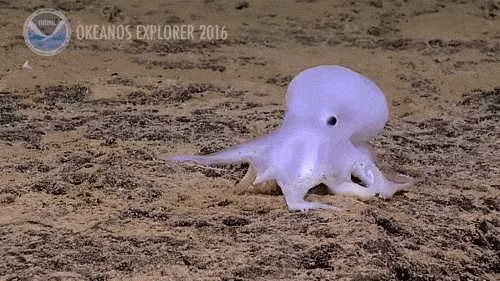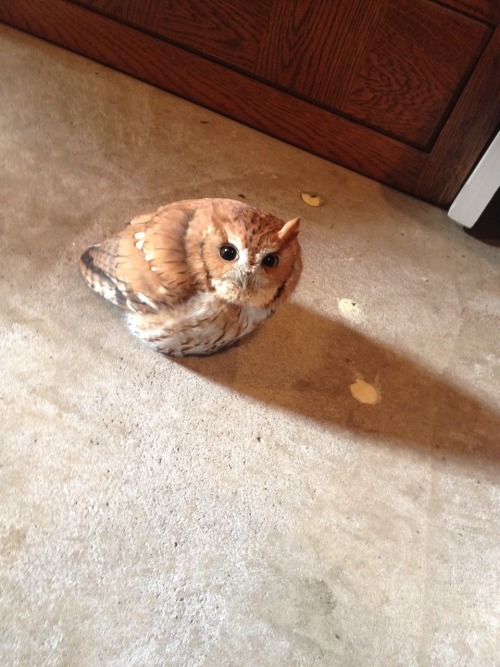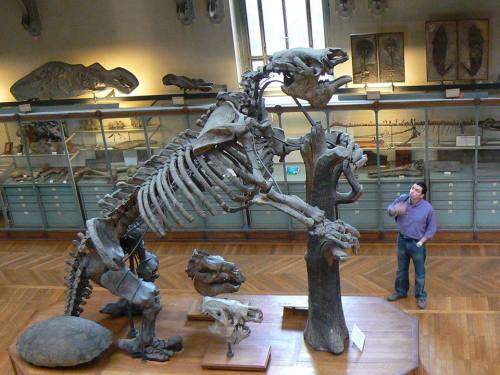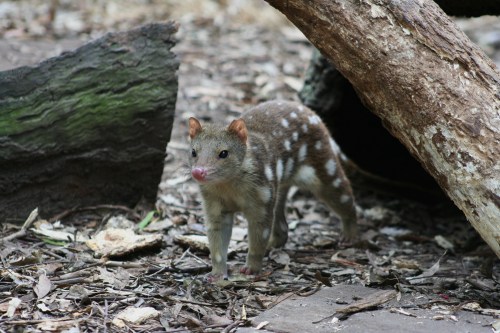Updated Visalization Of Every Vaquita Left On Earth

Updated visalization of every Vaquita left on Earth
There are supposed to be 5000 of them. Now there are 30.
What has been done so far has not worked, including the ban on gill nets, and the capture effort that is coming will probably be far too late.
This is humanity’s fault.
China for pushing the market for totoaba swim bladders, Mexico for allowing it until this point, and the rest of us for not stepping up until they are at death’s door.
This species will most likely be gone in one or two years, and it will be the second cetacean species to die out in a little over ten years, the second in the entire 200 000 year history of the human species.
More Posts from Llamaslikesciencetoo and Others

The dancers of the sea | Peter Chadwick


The Okeanos Explorer has discovered a very cute octopus at a depth of 4,290 metres.
This is the deepest an octopus of this particular sub order of octopus has ever been seen.
The National Oceanic and Atmospheric Administration noted this is a completely unsubscribed species and perhaps not belonging to any specific genus. Highlighting how little we still know about the creatures in the depths of our oceans.
(Ocean Explorer)



Video: Ocean Ramsey Swims With A Whale Shark
See The Amazing Video Here!!

The name “hippopotamus” comes from a Greek word meaning “water horse” or “river horse.” But hippos are not related to horses at all—in fact, their closest living relatives may be pigs or whales and dolphins! (photo: Peter Csanadi)


It’s a cute little thing though.

Photograph of a pregnant uterus (womb) from a New Forest pony, approximately five months into the pregnancy. The developing pony (fetus) is outside the uterus but remains attached by its membranes and umbilical cord. The bent back legs of the fetus are sticking out from the membranes (top right-hand side). The uterus has been cut open to reveal its vast blood supply, which is visible on the inner surface. This historical specimen is from a cull animal that happened to be pregnant at the time. It is preserved in formalin in a Perspex container and was photographed in the Anatomy Museum of the Royal Veterinary College in London. (Credit: Michael Frank, Royal Veterinary College / Wellcome Images)

Behemoths of the ancient past…and future?
One thing that many known prehistoric creatures have in common - and the thing that most people find fearsome - is that a lot of them were huge. Everyone knows about the gigantism of T-rex, Diplodocus, and Megalodon. But there were also ground sloths the size of modern-day elephants, dragonflies the size of hawks, and cockroaches the size of domestic cats (!)
Keep reading

Quoll Returns to the Australian Mainland After 50 Years
On March 1st, Fourteen eastern quolls were released into Australia’s mainland to rebuild their population because of a team’s effort from Australian National University. Since the 1770′s, quoll numbers have been declining due to many dangers such as habitat loss and predators that include foxes, wild dogs, and cats.
The quoll is carnivorous and feeds on smaller mammals, small birds, lizards, and insects. Until now, it has inhabited inland parts of Australia. There are six current species(pictured is the tiger quoll). The larger of which live longer than the smaller, with an average life span of two to five years.
So, whats the point of this translocation? Well, quolls are important to the functioning of the mainland ecosystem where they regulate the prey species. The released quolls will have radio tracking collars to be monitored.
Fact about the quoll: Male and female quolls only meet for mating, and male den territories often overlap female territories. However, they have communal toilets where they may have up to 100 droppings in them.
Photo by: joshua cunningham via Flickr

Microfilter allows non-invasive diagnosis of fetal abnormalities
A new method could allow physicians to diagnose fetal genetic abnormalities during pregnancy without the risks involved in current techniques.
A team of scientists at the Agency for Science, Technology and Research (A*STAR) Institute of Microelectronics (IME) has fabricated a microchip that can filter fetal red blood cells from the mother’s circulation. Retrieving these isolated fetal cells could allow the early diagnosis of fetal genetic abnormalities.
The technique, which would require drawing only a few millilitres of blood from an expecting mother, could be used from the eighth week of pregnancy; earlier than current prenatal diagnostic procedures.
Do animals have sex for fun? This video attempts to answer a question all of us might have asked ourselves at some point!
-
 cernunnos1990 reblogged this · 4 years ago
cernunnos1990 reblogged this · 4 years ago -
 cernunnos1990 liked this · 4 years ago
cernunnos1990 liked this · 4 years ago -
 wappladage liked this · 4 years ago
wappladage liked this · 4 years ago -
 hootyhollystrawberry liked this · 4 years ago
hootyhollystrawberry liked this · 4 years ago -
 ghost-in-a-wasteland liked this · 4 years ago
ghost-in-a-wasteland liked this · 4 years ago -
 fuckmylifedudee liked this · 4 years ago
fuckmylifedudee liked this · 4 years ago -
 fuckenbeautiful reblogged this · 5 years ago
fuckenbeautiful reblogged this · 5 years ago -
 ghostlyspacegoat liked this · 5 years ago
ghostlyspacegoat liked this · 5 years ago -
 quail-scaped reblogged this · 5 years ago
quail-scaped reblogged this · 5 years ago -
 moonlitdreamsofyou liked this · 5 years ago
moonlitdreamsofyou liked this · 5 years ago -
 teddybearsneakers reblogged this · 5 years ago
teddybearsneakers reblogged this · 5 years ago -
 elements-of-glow liked this · 5 years ago
elements-of-glow liked this · 5 years ago -
 nintendo-it reblogged this · 5 years ago
nintendo-it reblogged this · 5 years ago -
 somefishdood liked this · 5 years ago
somefishdood liked this · 5 years ago -
 thenatashaarts reblogged this · 5 years ago
thenatashaarts reblogged this · 5 years ago -
 thenatashaarts liked this · 5 years ago
thenatashaarts liked this · 5 years ago -
 lycanthropicseaweed reblogged this · 5 years ago
lycanthropicseaweed reblogged this · 5 years ago -
 lycanthropicseaweed liked this · 5 years ago
lycanthropicseaweed liked this · 5 years ago -
 juizer-de-lis reblogged this · 5 years ago
juizer-de-lis reblogged this · 5 years ago -
 juizer-de-lis liked this · 5 years ago
juizer-de-lis liked this · 5 years ago -
 empty-apple reblogged this · 5 years ago
empty-apple reblogged this · 5 years ago -
 btdlawrence reblogged this · 5 years ago
btdlawrence reblogged this · 5 years ago -
 btdlawrence liked this · 5 years ago
btdlawrence liked this · 5 years ago -
 angelwavez liked this · 5 years ago
angelwavez liked this · 5 years ago -
 skillfulprey reblogged this · 5 years ago
skillfulprey reblogged this · 5 years ago -
 barnellbohusks liked this · 5 years ago
barnellbohusks liked this · 5 years ago -
 machairodus-horribilis liked this · 5 years ago
machairodus-horribilis liked this · 5 years ago -
 god-zee liked this · 6 years ago
god-zee liked this · 6 years ago -
 candle-heart liked this · 6 years ago
candle-heart liked this · 6 years ago -
 thebookdragon66 liked this · 6 years ago
thebookdragon66 liked this · 6 years ago -
 rickthoven reblogged this · 6 years ago
rickthoven reblogged this · 6 years ago -
 rickthoven liked this · 6 years ago
rickthoven liked this · 6 years ago -
 lickmyballs420 liked this · 6 years ago
lickmyballs420 liked this · 6 years ago -
 shootdownthatflag reblogged this · 6 years ago
shootdownthatflag reblogged this · 6 years ago -
 shootdownthatflag liked this · 6 years ago
shootdownthatflag liked this · 6 years ago -
 thetrashthatsmilesback reblogged this · 6 years ago
thetrashthatsmilesback reblogged this · 6 years ago -
 thetrashthatsmilesback liked this · 6 years ago
thetrashthatsmilesback liked this · 6 years ago -
 honorguest liked this · 6 years ago
honorguest liked this · 6 years ago -
 i-usedtobe-normal reblogged this · 6 years ago
i-usedtobe-normal reblogged this · 6 years ago -
 oreosandalcohol liked this · 6 years ago
oreosandalcohol liked this · 6 years ago -
 emilily826 liked this · 6 years ago
emilily826 liked this · 6 years ago -
 lolita-and-the-sun liked this · 6 years ago
lolita-and-the-sun liked this · 6 years ago -
 wintertidewater reblogged this · 6 years ago
wintertidewater reblogged this · 6 years ago -
 wintertidewater liked this · 6 years ago
wintertidewater liked this · 6 years ago -
 illmaterial reblogged this · 6 years ago
illmaterial reblogged this · 6 years ago -
 stinkystevespookette reblogged this · 6 years ago
stinkystevespookette reblogged this · 6 years ago -
 stinkystevespookette liked this · 6 years ago
stinkystevespookette liked this · 6 years ago
Mainly interested in ecology, but also the entirety of science.
179 posts